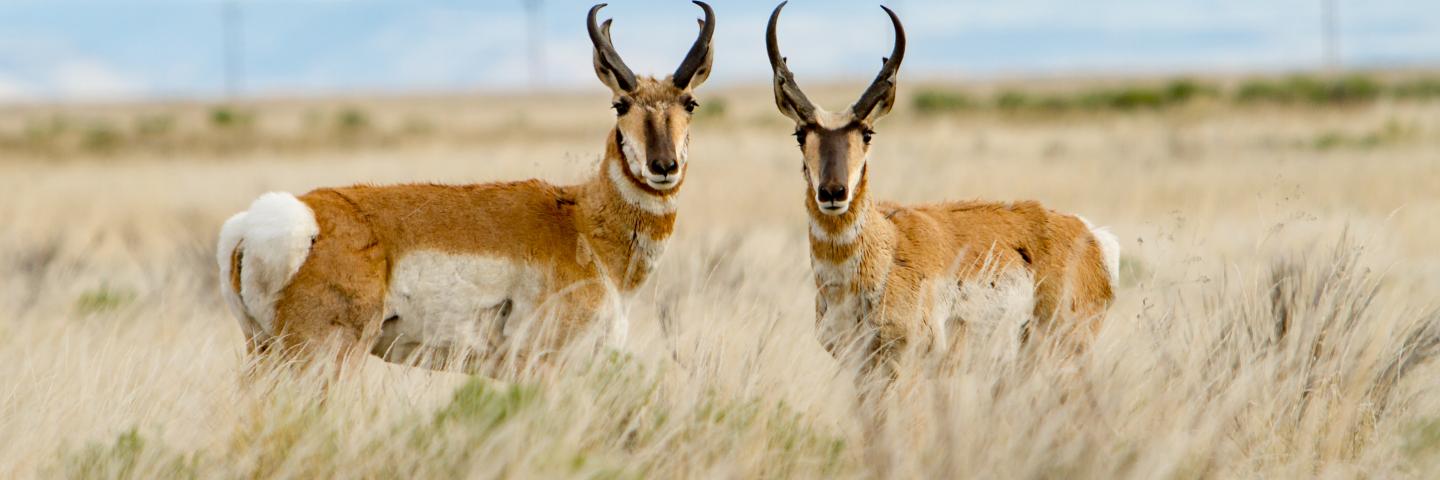
The Migratory Big Game Initiative focuses on maintaining and improving landscape diversity for various seasonal habitats as required by migratory big game animals.
About the Initiative
For generations wildlife biologists, ranchers, sportsmen, and Tribes have known that many large ungulate populations in Idaho and throughout the West migrate from summer to winter range to optimize forage quality and decrease seasonal risks associated with certain habitats. Local and migratory herds possess a special ecological, cultural, and economic importance to surrounding communities, and depend on a variety of land ownerships throughout each year.
Over the course of their annual migrations, many animals depend on private and tribally owned working lands for forage and for shelter from deep snow.
The Idaho Migratory Big Game Initiative (MBGI) will provide program support to eligible applicants to implement conservation practices that improve wildlife habitat for migratory big game species. Priorities for this effort are to maintain large and intact landscapes that provide diverse seasonal habitats required by migratory big game animals. This can be accomplished by addressing and improving resource concerns that negatively impact the quality and quantity of habitats. The partnership will allow for producers to modify and managing fences to facilitate the movement of wildlife through and across private lands.
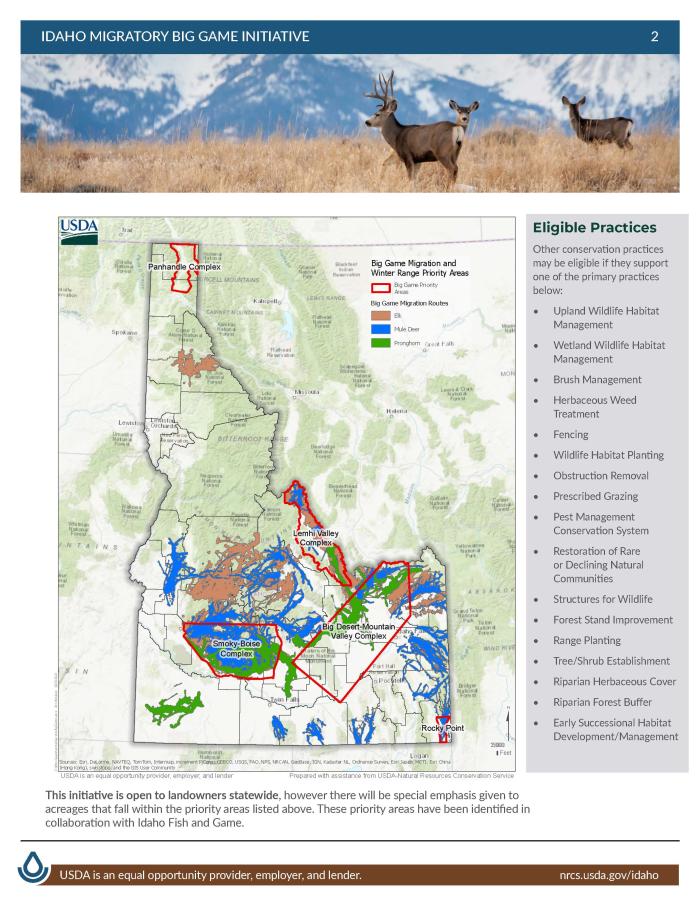
Package of Opportunities for Producers
USDA will offer producers a package of opportunities they can choose from to meet their operations’ unique needs. Programs include the Environmental Quality Incentives Program (EQIP) and Agricultural Conservation Easement Program (ACEP) and will be available across a wide range of lands including grasslands, shrublands, and forested habitats located on tribal and privately owned working lands.
Restoration, Enhancement, and Management: NRCS is investing additional dollars in EQIP funding to prioritize practices that restore and manage habitats migrating big game need. Some examples include fence conversion, invasive species treatments, aspen regeneration, and wet meadow restoration. EQIP focuses on integrating practices on working lands, such as prescribed grazing systems and cheatgrass control.
Agricultural Land Protection: NRCS is investing additional dollars in ACEP funding to use towards permanent conservation easements on important habitats within migration corridors. ACEP assists producers who want to protect sensitive landscapes and prime farmlands from conversion to non-compatible land uses such as residential subdivision through establishment of long-term conservation easements.
For fiscal year 2024, NRCS Idaho has $3.4 million EQIP dollars and $3 million ACEP dollars available for the new Migratory Big Game Initiative.
How to Apply
NRCS accepts applications year-round, but producers should apply by their state’s ranking dates to be considered for funding in the current cycle. For fiscal year 2024, applications for the MBGI EQIP ranking pool are ACT NOW. Applications received prior to April 5 will be considered for funding in this year’s cycle as long as they reach a minimum ranking score and EQIP funding is available in this ranking pool. Applications received after this date will be considered in a future funding cycle. More information about ACT NOW can be found on Idaho's EQIP homepage.
The initiative is open to producers statewide, but there are several priority areas where big game migrations are known to be prevalent. Producers should contact their local USDA Service Center to discuss how their property aligns with these priority areas.
Key Migratory Big Game Initiative Practices
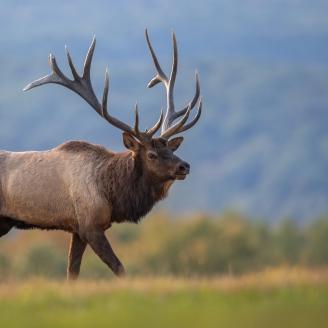
Upland Wildlife Habitat Management (645)
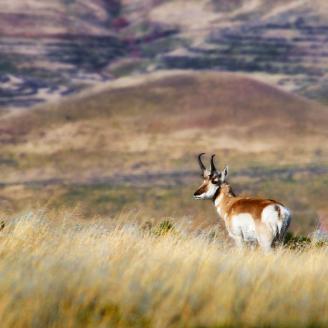
Wildlife Habitat Planting (420)

Fence (382) and Fence Retrofitting (649)
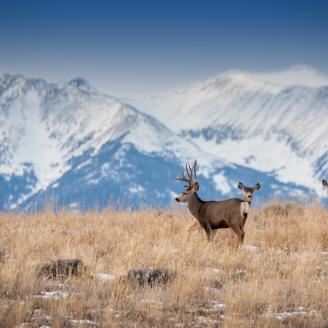
Early Successional Habitat Development (647)
External Resources
Additional Information
USDA Migratory Big Game Initiative
USDA is expanding its partnership to support the voluntary conservation of private working lands and migratory big game populations from Wyoming to Idaho and Montana.
Learn MoreEnvironmental Quality Incentives Program - Idaho
The Environmental Quality Incentives Program (EQIP) provides financial and technical assistance to agricultural producers and non-industrial forest managers to address natural resource concerns.
Learn MoreAgricultural Conservation Easement Program - Idaho
The Agricultural Conservation Easement Program (ACEP) helps landowners, land trusts, and other entities protect, restore, and enhance wetlands, grasslands, and working farms and ranches through conservation easements.
Learn MoreHistorically Underserved Farmers and Ranchers
The Agriculture Improvement Act of 2018 (2018 Farm Bill) includes provisions that address the unique circumstances and concerns of socially disadvantaged, beginning, limited resource, and veteran farmers and ranchers (“historically underserved producers”).
Learn More

